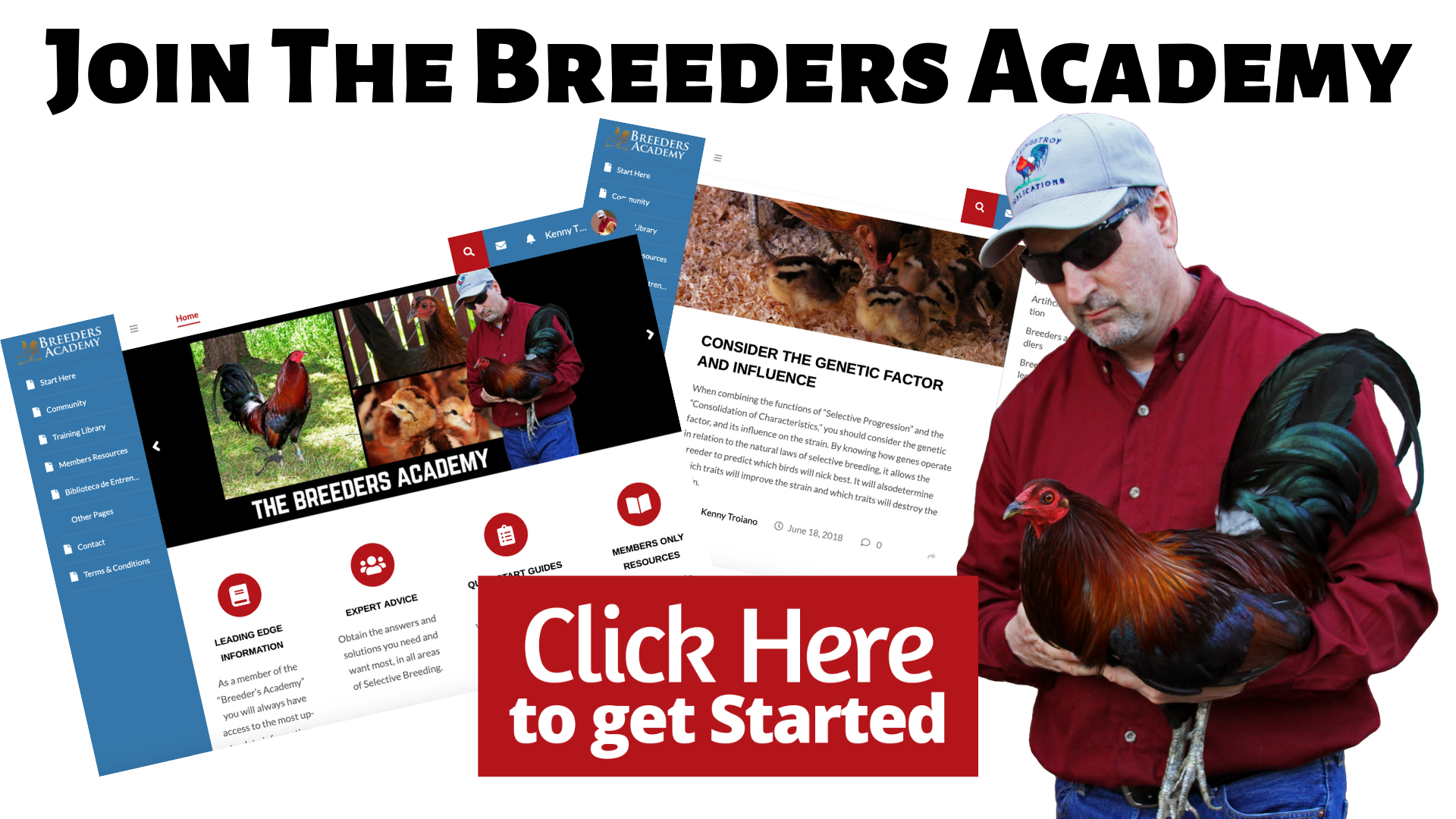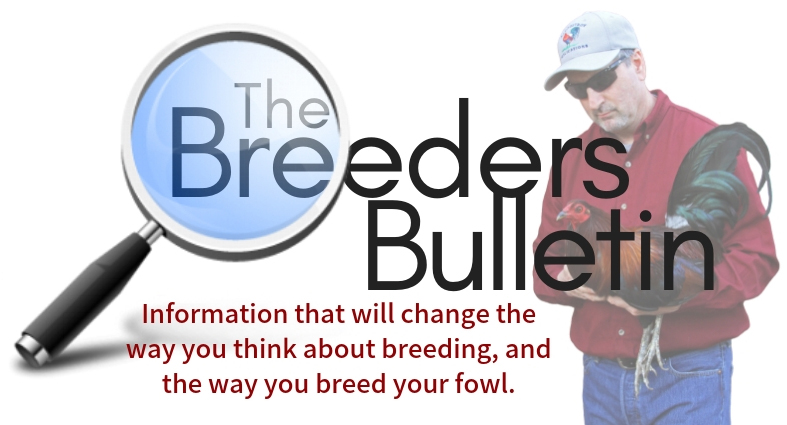Years ago, I ruined a family of fowl, because I didn’t mate my fowl properly. I was breeding stags with pullets every breeding season. I even bred my old hens to my old cocks, not knowing what the consequences would be.
The results were interesting. In time, I saw offspring that were smaller in size and less vigorous. They were weaker and less active, and they were not growing and developing properly. And when they finally reached maturity, their quality was extremely diminished. I also noticed that they got sicker easier. It was very obvious that I was going in the wrong direction, and if I didn’t figure things out, I was going to lose my strain.
What I learned from this was the importance of offsetting age by breeding the old to the young, and the young to the mature. After talking with my mentor, and discussing what was going on, he asked me, “Have you ever heard the term “Breed to Youth?” This is a well-known term used in the poultry world that states, you should always keep youth to one side of the breeding. Breed your young hens to older cocks, and breed your stags to your older hens. Never breed stags to pullets or old cocks to old hens. You must always offset the young with the old, and the old with the young.
He also showed me the value of making sure I only breed to mature birds, and never, ever breed birds that have not proven their worth. When I asked him, “How do you determine whether or not they have proven their worth?” He said, “When you look at the hens, they must be good mothers, and be good survivors. In other words, that must be naturally resistant to the diseases in their environment.”
“If you look at the stags, they must be good representatives of their breed and variety, and be healthy and vigorous. In fact, both cock and hen must have all these qualities to be considered future breeders.”
“He said if you are willing to cut corners, the consequences of your impatience will come back to you. Birds can change a lot in the first 12 months of their lives, both physically and mentally.
This little suggestion “breed to youth” improved my fowl tremendously. Once I changed how I mated my fowl, I saw a healthier, more vigorous flock, and a higher quality strain. This was not overnight, it took a few years – I had to work through the substandard birds, and change the way I mated them, before I saw improvement in the overall quality of my fowl.
The age of the bird plays a big factor in the quality of their offspring. Even if your strain has a solid genetic pool, age can be a determining factor in how well they pass their traits to their offspring, and how well their offspring grow and develop. In fact, I’ve seen some great strains ruined by breeding to birds that were not fully matured, breeding birds of the same age, or breeding birds that were too old.
This is where patience and self-discipline are required. It is very tempting to breed pullets and stags, instead of waiting until next year when they are mature and fully developed. Also, it’s so tempting to breed birds that are getting up there in age, and wanting to get one or two more years out of them, especially when they produced exceptional offspring in the past.
Here are my suggestions, when it comes to the age of your brood fowl, which will produce better results and aid you in the improvement and longevity of your strain. Wait until they are fully matured. This may be the most important, because, although the chicks produced from young stags and pullets are healthy and vigorous, they tend to be smaller in size. This can be devastating to a strain. In fact, the difference between a stag and a bull-stag, or a bull-stag and a cock is substantial.

